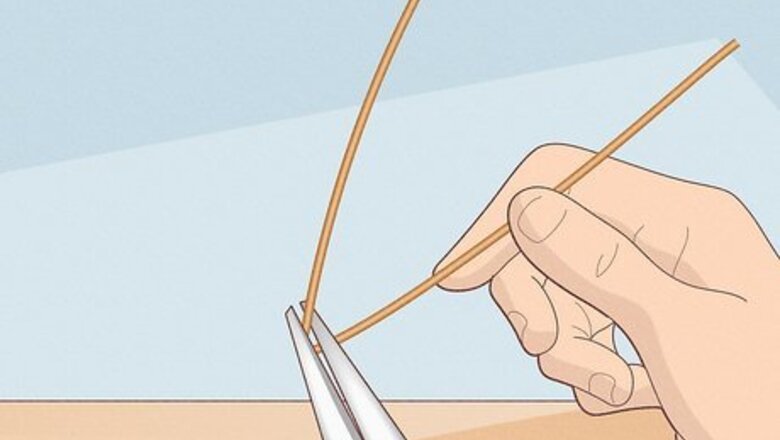
views
- An electroscope is a device that identifies electrical charges.
- Build your own electroscope with copper wire, aluminum foil, a plastic straw, a cardboard lid, and a glass jar.
- Rub a piece of styrofoam with wool to charge it with static electricity.
- Hold the charged styrofoam up to the coiled wire and watch the aluminum leaves separate.
Simple Electroscope
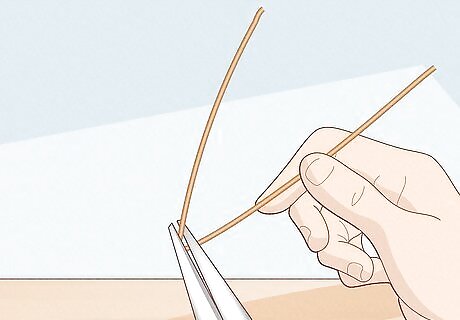
Bend a section of copper wire in half with needle-nose pliers. Cut a 15 cm (5.9 in) section of copper wire for your electroscope. You can make this length longer or shorter, depending on the size of your jar. Then, bend the wire at a 90-degree angle so it forms an “L” shape. If you don’t have any wire on hand, cut off a long section from a metal coat hanger. Your homemade electroscope will essentially be a wire threaded through a plastic or glass jar—one-half of the bent wire will be inside the glass, while the other half will be sticking out.
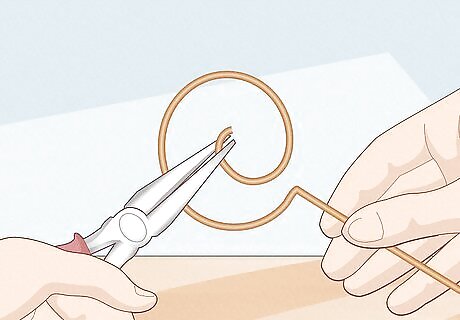
Coil the bent end of the wire into a spiral. Pinch and twist the wire with your pliers, curling it as you go. Make sure that the spiral is completely flat—this is the part of the electroscope that’ll be “picking up” the electrical charge from another object. Try to create at least 3 circles in your spiral, so the wire covers a larger surface area. Make sure that your wire has at least 1 coiled spiral.
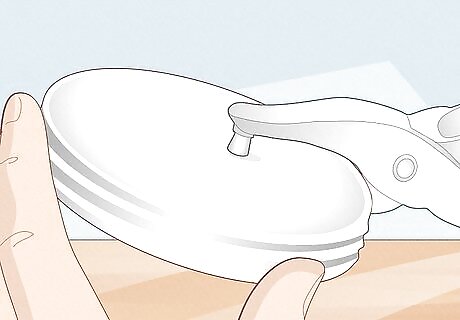
Make a cardboard lid for your electroscope. Flip your jar over and trace the opening onto a large piece of cardboard. Then, cut out the circular outline and punch a hole in the center with the tip of your scissors—just make sure it’s wide enough to fit a plastic straw. You can also use an old plastic jar and lid that you’re about to recycle (like an old peanut butter jar). Use a drill to make a hole in the center of the plastic.
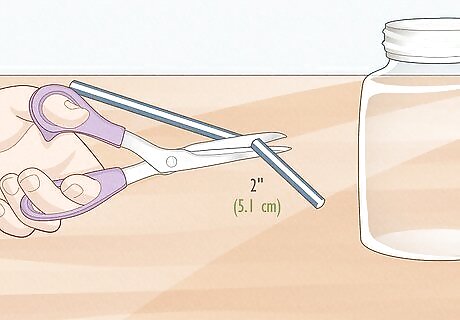
Cut a small piece of plastic straw and hot-glue it into the lid. Snip off a 3 in (7.6 cm) piece of straw and slide it through the lid’s opening. Using a hot glue gun, apply a circle of glue around both the top and bottom of the lid’s opening. Make sure that the straw is completely rigid before you continue. It only takes a few minutes for hot glue to dry.

Thread the straight section of wire through the straw. Arrange the straight portion of wire through the bottom of the straw and coiled section through the top part.
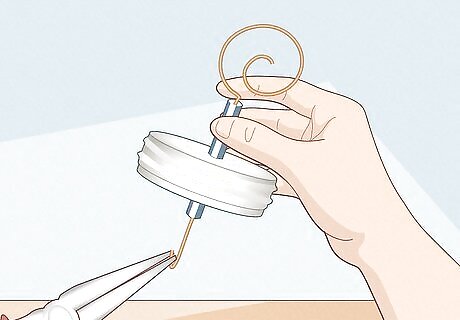
Bend the bottom of the wire into a hook shape. Use your fingers or a pair of needle-nose pliers to pinch the wire into a “U” shaped hook. This part of the wire will be inside the jar.
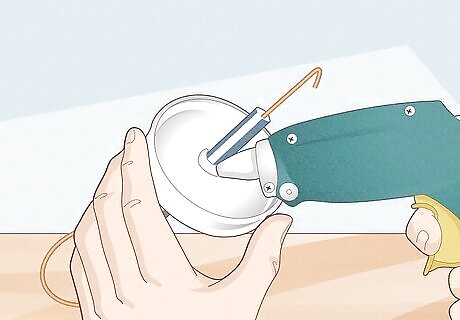
Hot-glue a small piece of straw to the opening in the lid. Using a hot glue gun, apply a circle of glue on along the top and bottom of the opening in the cardboard. Make sure that the straw is completely rigid before you continue.
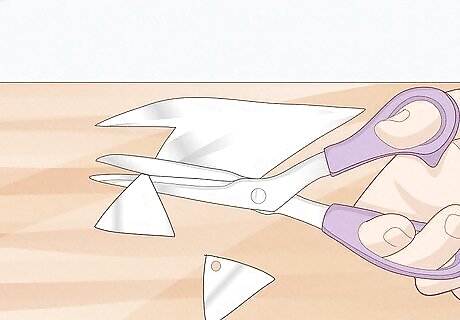
Cut out 2 identical, leaf-shaped pieces of aluminum foil. Make both pieces about 1 in (2.5 cm) long. Cut along the edges of the foil to give the leaves a curved pear shape. It’s okay if the shapes aren’t perfect! All that matters is that both pieces of foil are the same shape and size.
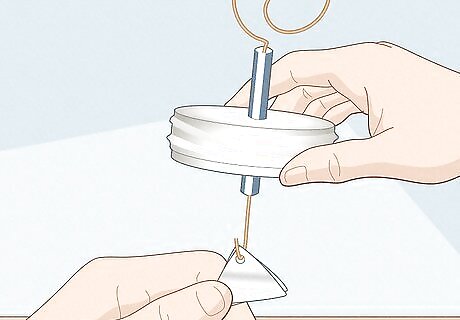
Thread the foil leaves onto the wire hook so both pieces are touching. Pierce the tapered top of each leaf with a pin to create a small hole and slide both of the leaves onto the wire hook. Make sure that both pieces of foil are touching; otherwise, the electroscope won’t work properly. You can also cut a small hole on the top of each leaf with a pair of scissors.
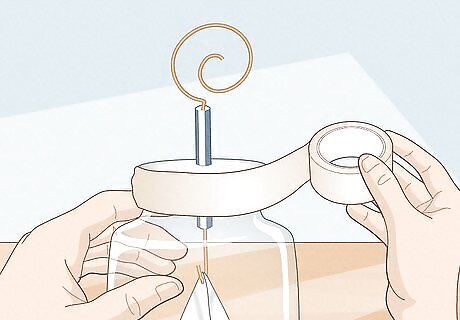
Tape the lid apparatus onto a glass or plastic jar. Center the lid on top of the jar—ideally, the aluminum leaves will reach about halfway down in the jar. Then, cut a long strip of electrical tape and secure it snugly around the rim of the jar, holding the lid in place. Don’t worry about taping the lid down if it’s an exact fit for the jar.
Simple Experiment

Place the electroscope in a dry room without a lot of humidity. Moisture and static electricity don’t mix well—so, if you’re testing your electroscope in a humid area, you might not get any noticeable results. Instead, set up your electroscope in a cool and dry room. Do you ever notice how you generate more static electricity when it’s dry and cold outside? That’s because there’s no moisture in the air to balance out the charges. The drier the environment, the more static electricity you’ll be able to produce!
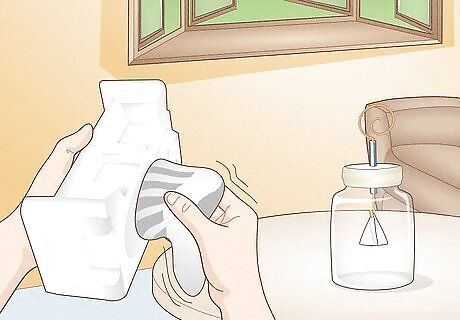
Rub a piece of styrofoam with a piece of wool to generate static electricity. Give the styrofoam a really good rubbing so you can make a lot of static electricity at once. You could also rub your fingertips along the front of a vinyl record to create static electricity.

Hold the item up to the coiled section of wire and watch the foil leaves separate. You’ve transferred extra electrons to the surface of your item, so holding this negatively-charged item to the coil creates “electrostatic induction.” In other words, the negative charge transfers through the wire and negatively charges both pieces of aluminum, which forces them to separate. Static electricity follows Coulomb’s Law—this is the idea that identical charges (like negative and negative) repel each other, while opposite charges (like positive and negative) attract one another. Experiment with different items and see which ones can build up static electricity. Test them against your electroscope and see what happens!




















Comments
0 comment